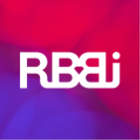
At RBBi, we’ve had the opportunity to conduct & work on several user research & usability testing projects for international brands/clients/agencies, over the last 3 years of our existence.
The scope of most of these projects have been regional, with key insights based on the perception of the local demographic.
Armed with the shared knowledge coming in from UX Fellows, agency partners globally and our past individual experiences, we have acknowledged that user research & testing both seem to have very peculiar challenges when it comes to this region. Most importantly, we have learnt that these challenges are completely different from what our counterparts face globally.
Of course, it’s just as easy to label and proclaim that the Middle East is unique in every aspect, but as we delve deeper, we realise that every market has its unique characteristics and it’s only apt to learn & understand them, so we can draw relevance on its implications. Our thoughts below on user research & testing for digital platforms are obviously in our capacity as Middle East’s only certified usability agency. We do not intend to undermine any traditional market research agencies, who we believe may have far more insights & knowledge in this regard.
Don’t paint the whole region in one colour.
As an outsider it’s very easy to think that the Middle East is just one big country. But one needs to understand that many countries in the Middle East have different Social and Economic dynamics. i.e. Understand the terms like Arabs, Expats and Locals. Locals in all countries have different socio-economic layers.
Your recruitment Screener Document should be precise to get the right users.
Profiling and screening is important in any market, however this region adds another dimension to it. The language. If you’re testing Arabic product make sure you get users who browse/interact in Arabic. Arabic speaking doesn’t always mean they use the Arabic interface. Many Arabic speakers use Arabic for conversations only and browse in English.
If you fail on this count, the insights you will get may not be the very relevant from the cultural impact and linguistic point of view.
Prepare your client, observers and yourself on the cultural behavior and attitude of users, especially locals.
In this region, no shows are very common – “inshallah” (maybe/god willing) is the term used for confirmation. So make sure you have enough back-ups for no shows. A few tips that may help:
- Depending on the target profile, offer pick-up or drop services
- Base your incentives on the profile of users. For example, expats would be fine with mall vouchers, but for high-end locals, hospitality and respect is an incentive.
Research findings cannot generalise English users behavior/content consumption on Arabic users.
Most think Arabic interface is just a “flip” of English interface, which is not true. User behavior goes well beyond that. We have seen non-flipped Arabic interfaces work as well. One really need to think about Arabic user as a separate design problem and give attention to it.
Do not hide anything from the participants
Ensure that you inform your participants on the presence of observers in the next room. If you don’t, you risk offending your participants which in-turn can be perceived as disrespectful (especially in countries such as KSA & Qatar).
Be careful with your equipment and do not rely on venue wi-fi
Make sure you travel with minimum equipment and be ready to explain these to the airport authorities in a very simple terminology. If you have remote viewing and other tech setup, do not rely on the venue wi-fi. Even the best of the meeting facilities may not have proper connections. Our recommendation, go the traditional way- carry cables.
Best not to hold sessions during the summer time as most people travel (kids have school holidays). Also, it’s comparatively far too tiring to commute to the sessions in this season.
Preference of testing time:
Working people tend to prefer after-work hours or on Friday or Saturday (weekends)
Non-working/ house-wife/mothers prefer between 10:00am-2:00pm
Recruiting time:
Very detailed segmentation / more criteria (filters) / elite group will take time and the sessions would be a spread over more days depending upon their availability.
Lesser criteria (filters) / generic user profiles can take approximately a 1 week to recruit 10-15 users.
We hope these insights help you plan your next User Research in this region and make it more effective and useful.



